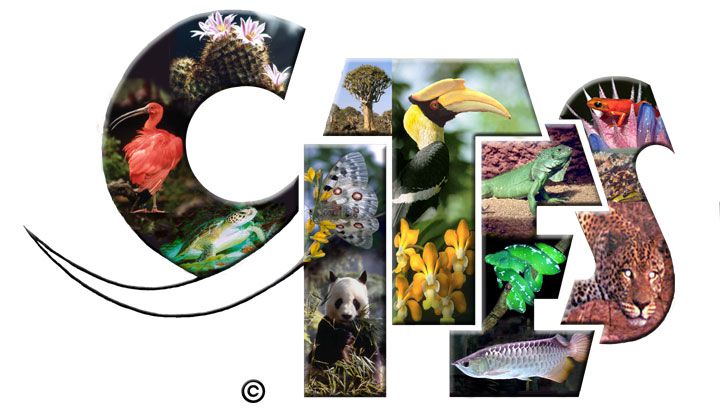-
 Hubble's law
Hubble's law
-
 Entomophage
Entomophage
-
 Post-mortem lividity
Post-mortem lividity
-
 Earth Summit
Earth Summit
-
 Mycorrhizas
Mycorrhizas
-
 Autumn Crocus
Autumn Crocus
-
 Crest
Crest
-
 Artichoke
Artichoke
-
 Router
Router
-
 Centre of mass
Centre of mass
-
 Xylem
Xylem
-
 Gland
Gland
-
 Hub
Hub
-
 Carbon compensation
Carbon compensation
-
 CT arthrogram
CT arthrogram
-
 SESAME
SESAME
-
 ECMA
ECMA
-
 Bridge
Bridge
-
 Medullary
Medullary
-
 LEO orbit
LEO orbit
-
 ISDN
ISDN
-
 IUCN
IUCN
-
 Nutricline
Nutricline
-
 Pneumonia
Pneumonia
-
 Oxidising agent
Oxidising agent
-
 Marginal basin
Marginal basin
-
 Axial
Axial
-
 Antipsychotic
Antipsychotic
-
 Anovulation
Anovulation
-
 Extrasolar
Extrasolar
Washington Convention
The Convention on International Trade in Endangered Species of Wild Fauna and Flora (CITES), or more simply the Washington Convention, was adopted in 1973 and entered into force in 1975. It regulates international trade of species to ensure their survival.
This international treaty concerns flora and fauna, both in the form of living specimens (for pet shops, zoos, etc.) as well as in the form of derived products (e.g. wood objects, fur, traditional remedies).
Species classification
Over 34,000 species are thus taken into consideration by this Convention, depending on their state of conservation and endangerment. These species are classified in three appendices, which determine to what extent each species can be used and traded.
- Appendix I species are those threatened by extinction. They can only be traded under exceptional circumstances, such as for scientific research or population management (overpopulation, reintroduction).
- Appendix II species are species whose state of conservation or over-exploitation can threaten their survival.
- When members countries of the convention want to regulate trade in their protected species, these species are listed in Appendix III.
The legal framework
In all cases, the trade of species from each appendix requires export permits (or re-export permits) which are issued by management organisms in the exporter countries. Only creatures that are legally obtained, without compromising the survival of the species can apply for these permits.
The 175 member countries to this convention are required to respect the legal framework and CITES procedures in order to reconcile sustainable trade of species and conservation of biodiversity
 The logo of the Washington Convention on its 35th anniversary. © Cites
The logo of the Washington Convention on its 35th anniversary. © Cites
Latest
Fill out my online form.



